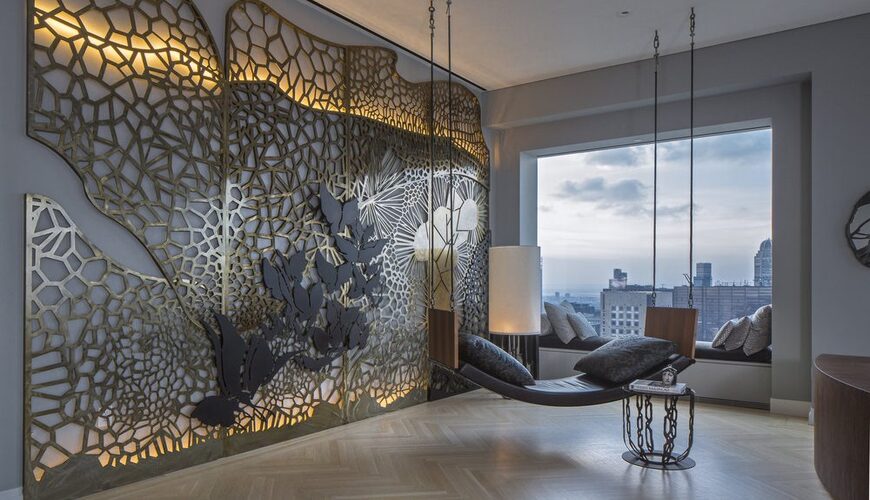
Advanced Diploma In Interior Design And Decoration (ADIDD)
By NCTA Team Last Updated: July 26, 2025Overview:
The Certificate in Interior Design and Decoration (CIDD) is a one-year course designed for individuals who are passionate about creating aesthetically pleasing and functional living and working spaces. This course equips students with the foundational knowledge and practical skills required to enter the field of interior design, covering essential aspects such as space planning, color theory, furniture selection, lighting, textiles, and decoration techniques.
Students will learn to transform concepts into reality by combining creativity with technical know-how, allowing them to create environments that are both visually appealing and practical. The course also emphasizes sustainable design practices and trends in modern interior design, preparing students for current industry demands.
Upon completion of the course, students will have the ability to conceptualize, plan, and execute design solutions for residential, commercial, and corporate spaces. Whether for personal interest or career advancement, this certificate offers a solid foundation in interior design and decoration.
Objectives:
The Advanced Diploma in Interior Design and Decoration (ADIDD) equips students with essential design skills, creative techniques, and practical knowledge to transform spaces into functional, aesthetically pleasing environments.
Course Curriculum:
This course is designed to provide students with a comprehensive understanding of interior design principles, space planning, material selection, lighting, and practical applications. The course blends creative and technical aspects, equipping students with necessary skills to design functional and aesthetically pleasing spaces. Below is the detailed curriculum:
- Introduction to Interior Design:
- Principles and elements of interior design
- Interior design styles and trends
- Understanding client needs and preferences
- Drawing for Interior Design:
- Basic sketching techniques
- Orthographic drawings (plans, elevations, sections)
- Perspective and isometric drawings
- Digital tools (AutoCAD, SketchUp)
- Design Studio:
- Concept development and design thinking
- Residential space design fundamentals
- Furniture layout and ergonomics
- Mood boards and presentation techniques
- Space Planning:
- Understanding spatial relationships
- Zoning and circulation in different spaces
- Residential vs. commercial space planning
- Construction & Detailing:
- Basics of construction methods
- Wall, ceiling, and flooring treatments
- Furniture detailing and fixtures
- Materials in Interior Design:
- Types of materials: wood, glass, metal, stone, textiles
- Selection of materials based on aesthetics and function
- Sustainable and eco-friendly materials
- Lighting for Interior Design:
- Types of lighting: ambient, task, and accent
- Lighting techniques for different spaces
- Natural vs. artificial lighting
- Practical:
- Real-world interior design project
- Portfolio development and presentation
- Industry exposure and professional experience
Career Opportunities:
Upon completing the course, graduates can explore various career opportunities in the dynamic field of interior design. Some potential career paths include:
- Interior Designer: Assist in designing and decorating residential and commercial spaces.
- Interior Decorator: Focus on aesthetic enhancements, including furniture, fabrics, and accessories.
- Space Planner: Plan and optimize interior layouts for functionality and efficiency.
- Lighting Consultant: Specialize in designing lighting solutions for different spaces.
- Material and Furniture Consultant: Advise clients on selecting suitable materials, finishes, and furnishings.
- Set Designer (TV, Film, or Theatre): Work on designing and decorating sets for productions.
- Freelance Interior Stylist: Offer independent design and styling services for homes and businesses.
- CAD Draftsperson for Interior Design: Create digital layout designs and plans for projects.
- Retail Visual Merchandiser: Design and arrange store layouts for an appealing shopping experience.
- Event and Exhibition Designer: Plan and decorate venues for exhibitions, events, and trade shows.
Salary Expectations:
Below is an estimated salary range in India:
- Entry-Level: ₹1,20,000 to ₹2,50,000 per year
- Experienced-Level: ₹3,50,000 to ₹6,00,000 per year
- Senior-Level: ₹6,00,000 to ₹12,00,000 per year.
Course Features
| Course Code | NCTA-302 |
| Duration | 12 MONTHS |
| Category | Advanced Diploma In Interior Design And Decoration (ADIDD) |
| Eligibility | ALL LEVELS |
| Fees | INR(₹) 8000.00/ USD($) 230 |
To know more about our this course, feel free to call us at:
+91 9733600770
